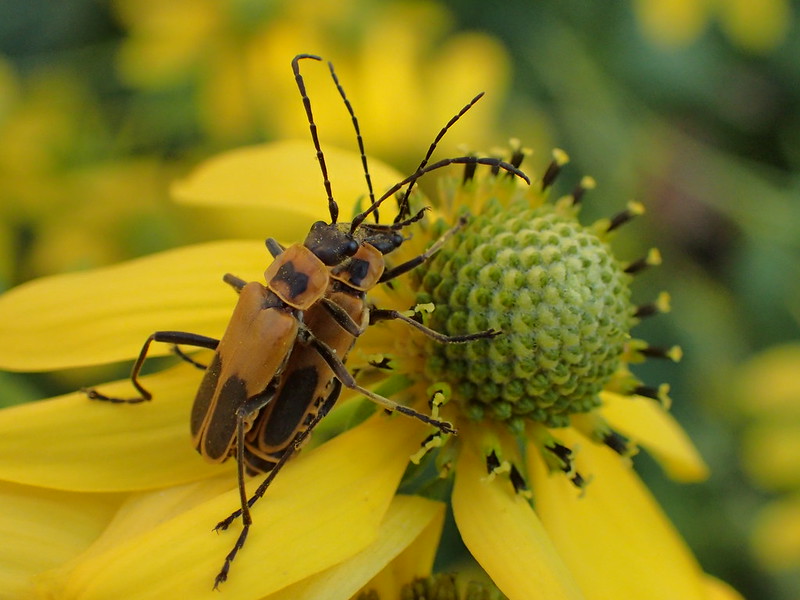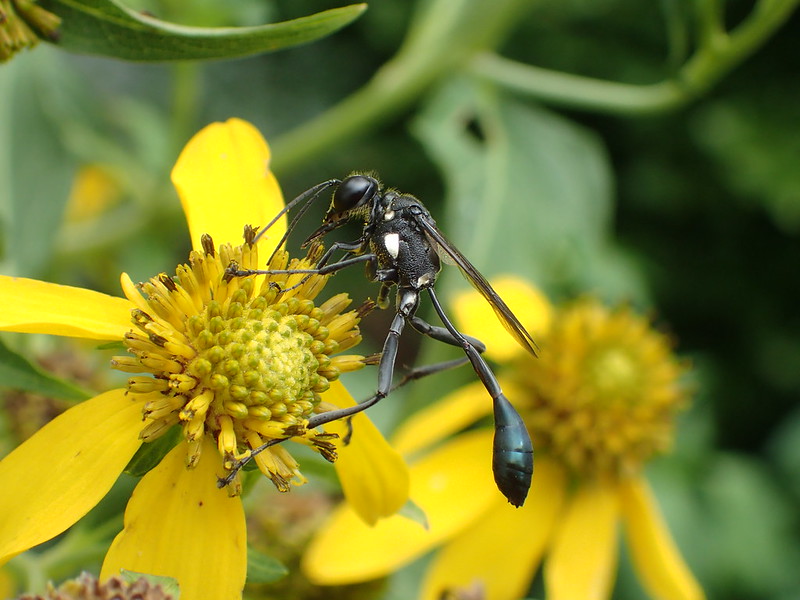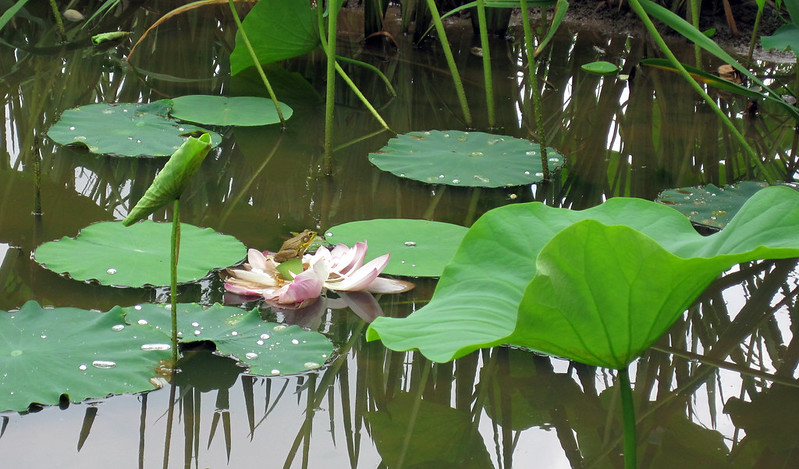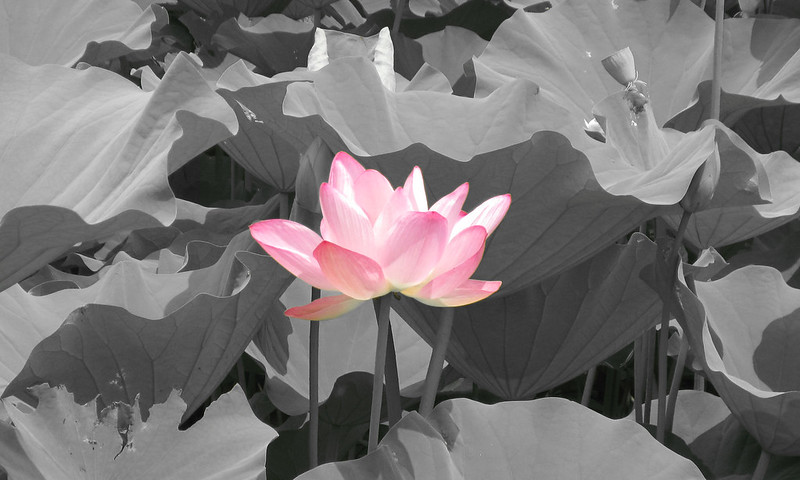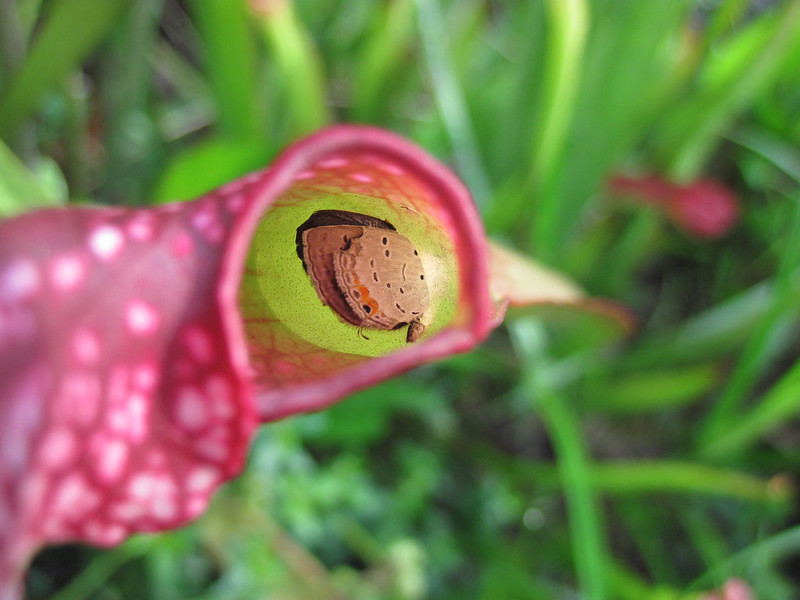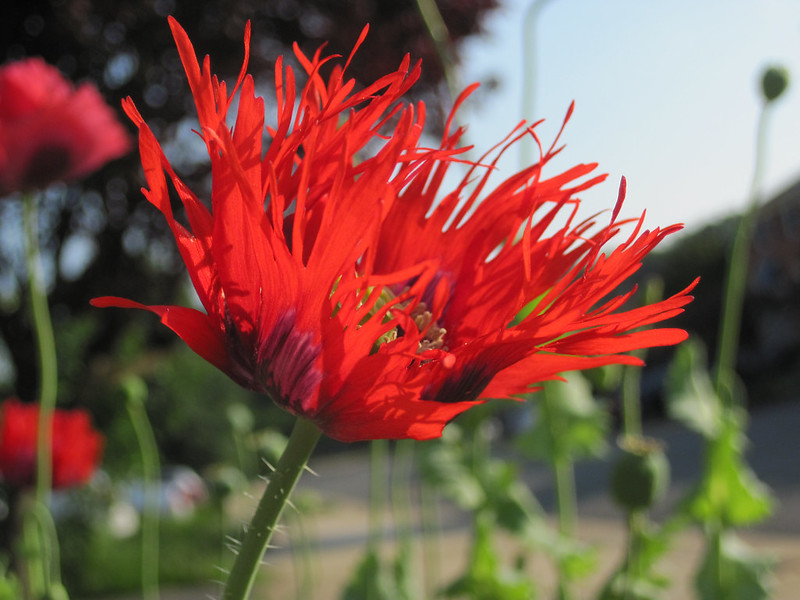I put in some Rudbeckia laciniata in the front garden this year (Tall coneflower) which I had had in another spot and really liked. However, that other spot definitely didn’t get as much sun because that stand definitely doesn’t get 7 feet tall and absolutely covered in flowers like this bunch. I’m actually probably going to have to move it because it’s way too tall for the space. This is a total bummer because it attracts the best selection of bugs. Primarily it gets small butterflies and bumblebees, but here’s a selection of the different insects I’ve found on it recently:
One of a bunch of nondescript butterflies.
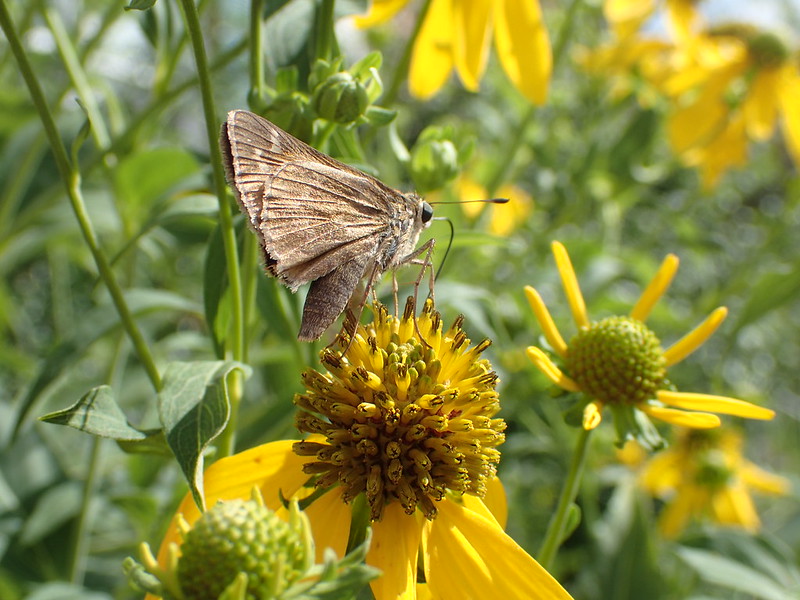
Possibly two different species of bumblebee. I’m good enough to know the difference between bumble, honey, mason, and sweat bees but that’s as good as it gets.
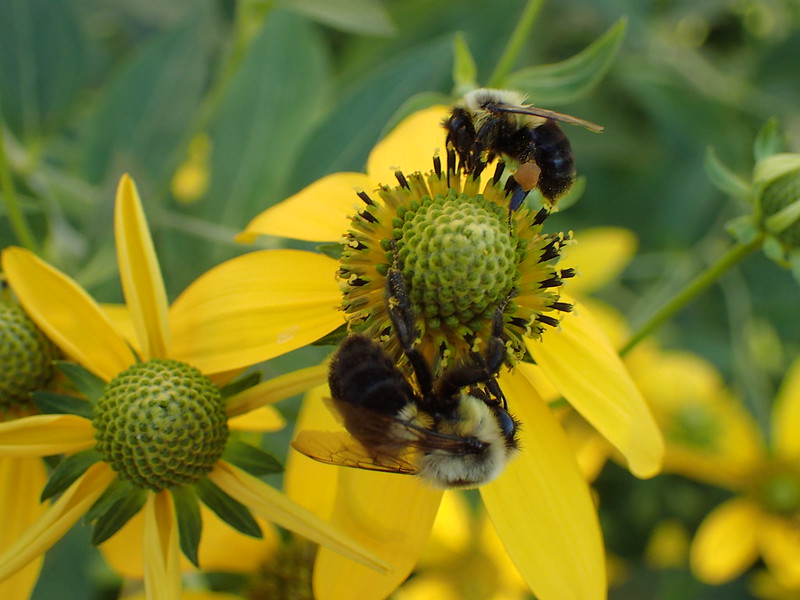
I believe this is Xylocopa micans – Southern Carpenter Bee. Either that or it’s a carpenter bee from Europe and that would be not good. The only reason I know this (compared to the [shrug emoji] bumblebees) is because I googled and got the European bee first and had a bit of a freak out about invasive species. Then I did a bit more digging in the genius.
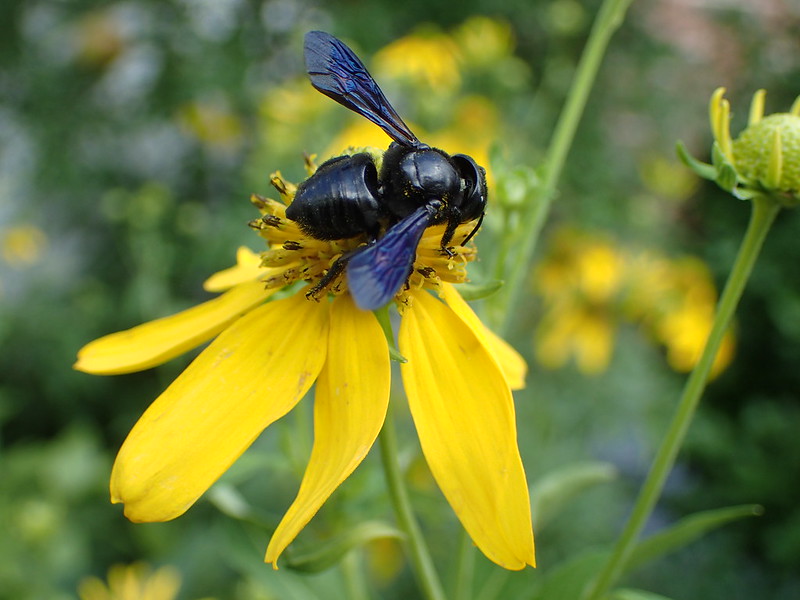
I also spotted a robberfly eating a housefly which was the whole reason I grabbed my camera but by the time I got back out there, it was gone.
